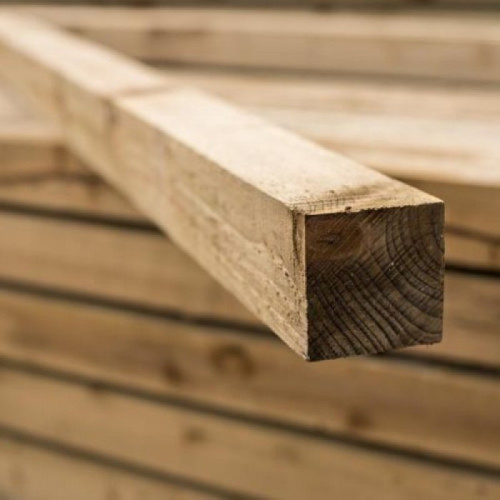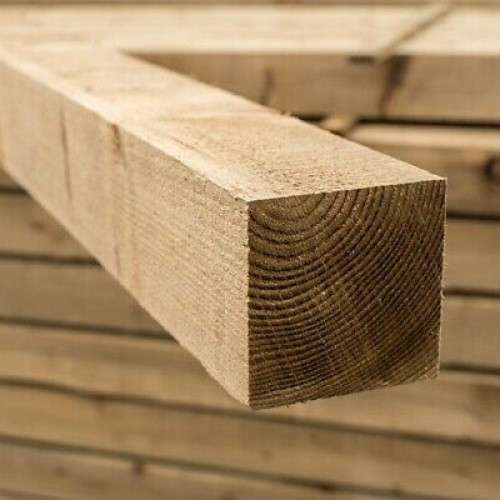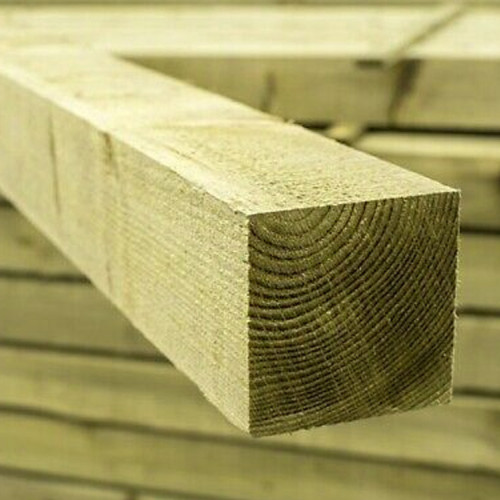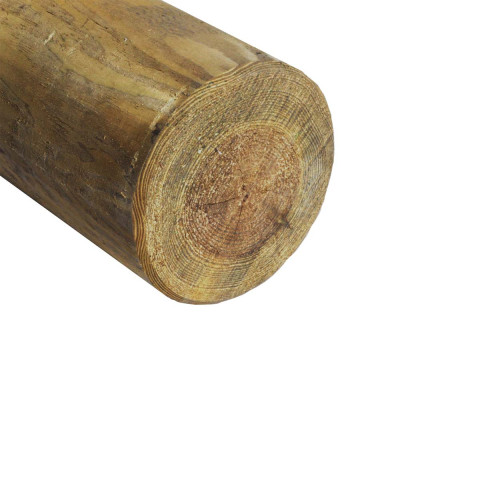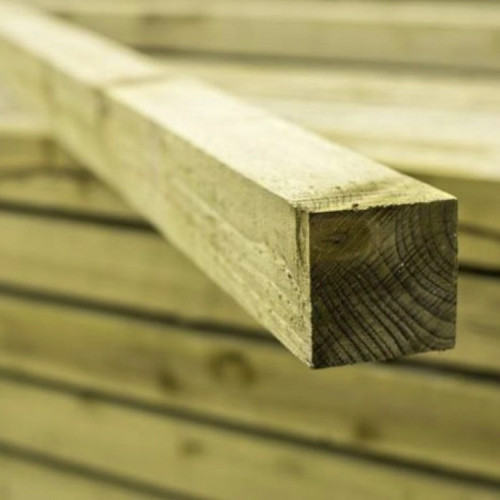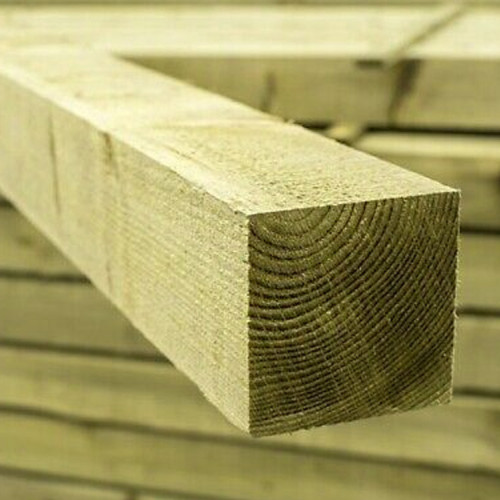Wooden Fence Posts
Discover our range of durable wooden fence posts, designed to meet all your gardening and landscaping needs. Whether you're looking to create a traditional fence boundary, add structural support to your garden, or bring a natural aesthetic to outdoor spaces, our wooden posts are versatile, sturdy, and ready to withstand the elements.
Crafted from high-quality timber, these posts ensure longevity and are available in a variety of sizes and finishes to complement any project. Ideal for both professional landscapers and DIY enthusiasts, our wooden fence posts provide the perfect foundation for a secure and attractive outdoor area.
Stock: In Stock
Discover the strength and durability your garden fencing needs with our 2.4M x 100 x 100mm Wooden Fence Post. Expertly crafted to stand the test of time, this robust wooden post is pressure treated in a rich brown hue, ensuring not only superior longevity but also an aesthetic appeal that enhances your outdoor space. Ideal for supporting a wide ran..
from
£16.95
Ex Tax:£14.13
Stock: In Stock
Discover the backbone of your garden fencing with our premium 2.4M x 75 x 75mm Wooden Fence Post. Crafted for durability and strength, this essential component is the perfect foundation for any fencing project.
Our wooden fence post is pressure treated brown, ensuring a longer lifespan by protecting against rot, decay, and insect attack. This trea..
from
£9.95
Ex Tax:£8.29
Stock: In Stock
Introducing the robust 3.0M x 75 x 75mm Wooden Fence Post, a pivotal component for any fencing project, designed to ensure durability and longevity for your boundary solutions. This premium quality post is meticulously crafted to meet the highest standards of strength and resilience.
What sets this post apart is its pressure-treated brown finish, ..
from
£11.95
Ex Tax:£9.96
Stock: In Stock
Introducing our robust 2.4M x 100 x 100mm Wooden Fence Post, the backbone for any sturdy and long-lasting garden fencing project. Crafted with precision, this wooden fence post is not just another component of your garden but a testament to durability and quality.
One of the standout features of our wooden fence post is its pressure-treated green ..
from
£16.95
Ex Tax:£14.13
Stock: In Stock
Introducing our premium 1.8M x 75 x 75mm Wooden Fence Post, designed to elevate the aesthetics and durability of your fencing project. Crafted with the utmost attention to detail, this wooden post is not just any component of your fence; it's the backbone that ensures longevity and stability.
Pressure-treated in green to resist decay, rot, and ins..
from
£6.95
Ex Tax:£5.79
Stock: In Stock
Introducing our premium 2.4M x 75 x 75mm Wooden Fence Post, the perfect foundation for securing your outdoor spaces with elegance and durability. Crafted with precision, this wooden fence post is designed to offer unmatched stability and longevity for your fencing projects.
The key to its robustness lies in its pressure-treated green finish, ensur..
from
£9.95
Ex Tax:£8.29
Stock: In Stock
Introducing our robust 1.8M x 100 x 100mm Wooden Fence Post, the backbone of any sturdy and durable fencing project. Crafted with precision, this premium-quality wooden post is designed to meet the highest standards of strength, reliability, and aesthetics.
What sets this product apart is its pressure-treated finish in a rich brown hue, ensuring l..
from
£12.95
Ex Tax:£10.79
Stock: In Stock
Discover the foundation of a durable and elegant fencing solution with our 3.0M x 100 x 100mm Wooden Fence Post, meticulously designed to meet the highest standards of quality and aesthetics for your outdoor space. Crafted for longevity, this premium fence post is pressure treated with a rich brown finish, ensuring that it not only stands the test ..
from
£20.95
Ex Tax:£17.46
Stock: In Stock
Discover the strength and durability your garden fencing needs with our 3.0M x 100 x 100mm Wooden Fence Post. Expertly crafted to stand the test of time, this wooden fence post is pressure treated green, ensuring it not only blends seamlessly into your outdoor space but also offers unrivalled protection against the elements and pests. Ideal for tho..
from
£20.95
Ex Tax:£17.46
Stock: In Stock
Discover the ultimate solution for your fencing needs with our KD UC4 Treated 1800MM x 73MM x 73MM Machine Round Pointed Post. Expertly crafted to offer both durability and aesthetic appeal, this wooden post is a must-have for anyone looking to create a robust and attractive boundary.
Pressure treated green for longevity, this post is designed to ..
from
£8.95
Ex Tax:£7.46
Stock: In Stock
Discover the strength and reliability of our 3.0M x 75 x 75mm Wooden Fence Post, designed to meet all your fencing needs. Each post is meticulously pressure treated green to ensure durability and longevity, making it an ideal choice for both residential and commercial applications.
Crafted from high-quality timber, these posts are not only robust ..
from
£11.95
Ex Tax:£9.96
Stock: In Stock
Discover the foundation of your garden's transformation with our 1.65M x 100 x 100mm Wooden Fence Post. Designed with both durability and aesthetic in mind, this pressure-treated green post is the perfect backbone for any garden fencing project.
Crafted to withstand the test of time, our wooden fence post is treated to fend off rot, decay, and ins..
from
£12.95
Ex Tax:£10.79



